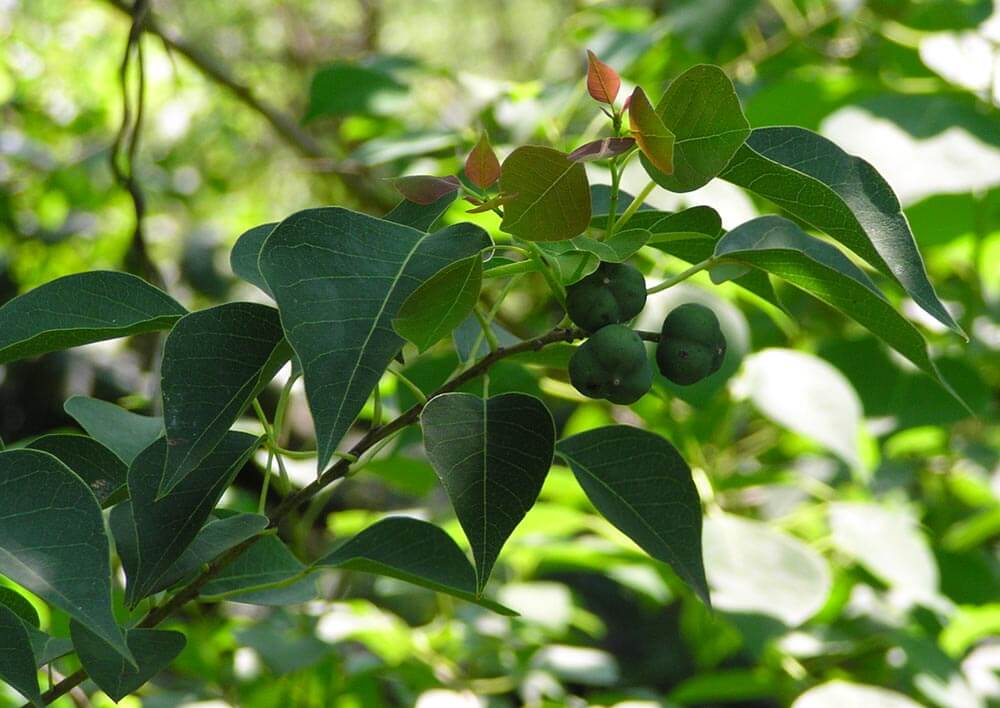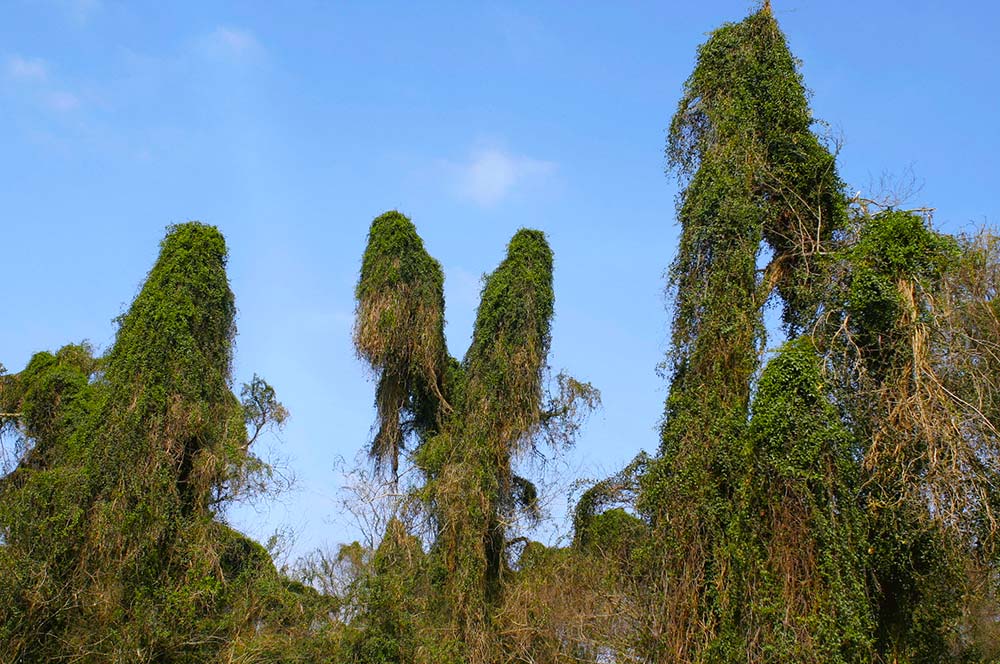A healthy habitat is one where nature has been allowed to take its course for a long time.
All of the biological niches are filled, and the community of organisms coexists in relative balance. Disturbance of this system occurs when this balance gets upset. Disturbance can occur naturally, as in floods, fires, or hurricanes, but human activities like clearcutting or pollution have a major impact too. One of the qualities many invasive species share is that they are effective early pioneers of disturbed habitats. They can move into an area to take advantage of disturbance more quickly than the native species. They establish a toe-hold that gives them a head start over natives. Invasive vines like catclaw grow quickly when hurricanes knock down trees and sunlight begins to hit the forest floor, and Chinese tallow trees are notorious first pioneers of cleared land, to give two examples. To complicate matters further, biological invasions are also considered ecological disturbances. Once established, invasives often degrade habitat quality and upset the natural community balance. Thus, they cause disturbance that can pave the way for additional invasive species to come in. This ominous feedback loop is called invasional meltdown.

 Photo by John Fleetwood
Photo by John Fleetwood
